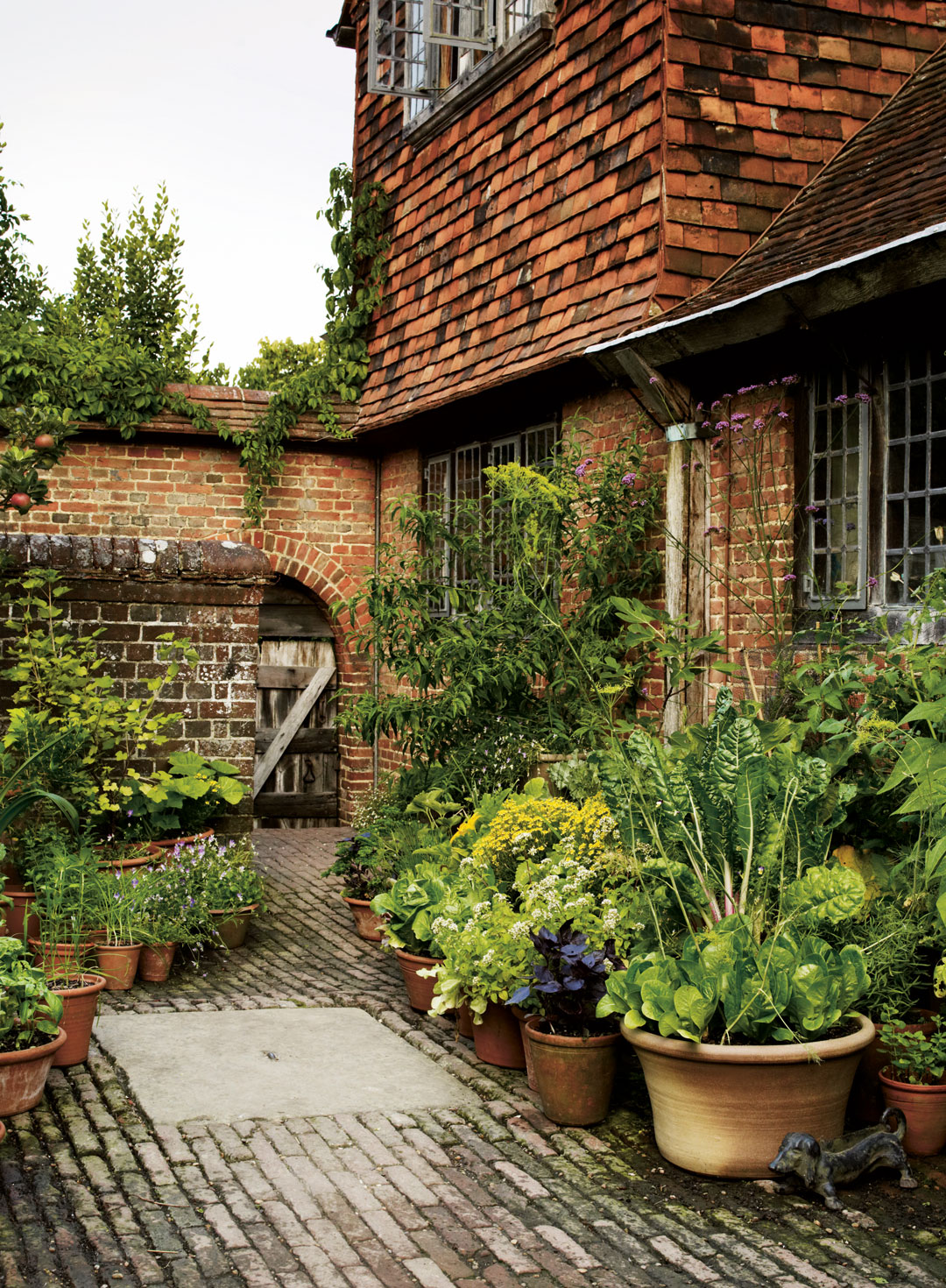
Make your own kitchen garden, more or less anywhere!
Aaron Bertelsen, Great Dixter's gardener and cook, guides us through the foundation of a fertile container garden
Aaron Bertelsen, the vegetable gardener and cook at the iconic English country house, Great Dixter takes great pride in the container garden he has developed over the past few years on the bare brick courtyard immediately outside his kitchen door.
It might seem perverse to throw so much effort into a tiny patch of once barren land, as Great Dixter sits in the glorious countryside of East Sussex. However, Bertelsen enjoys the convenience of having fresh produce on-hand, just a step or two away from his stove. Have you got a similar space? Then you too can the same bountiful convenience. Here’s how, according to Bertelsen's new book Grow Fruit & Vegetables in Pots.
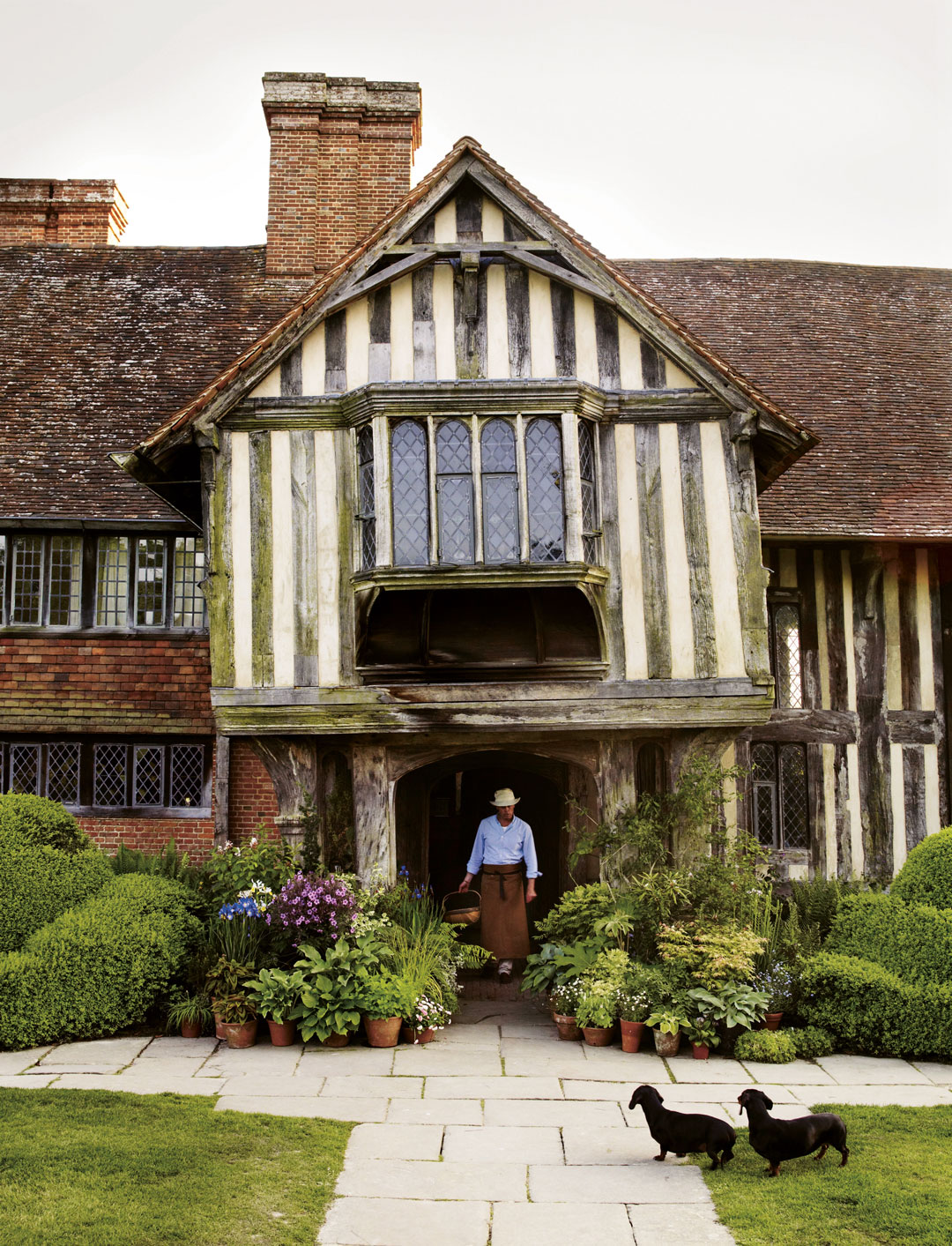
Choose what you want to grow What can you grow in pots? Bertelsen says “The short answer to this question is, anything you like. From delicate leafy herbs to root vegetables and sturdy fruit trees, there should be no reason why – given a little thought, forward planning and, of course, some tender loving care – you can’t create a varied, productive container garden, whatever the space and the conditions you are working in.”
However, he does steer new gardeners towards certain crops. “If I could grow only one type of thing in my container garden, it would be salad leaves. This also happens to be what I would recommend new gardeners to start with. Salad leaves are easy to grow, make good use of space and generally taste much better than what you can buy in the shops. Other stars of the kitchen container garden include stalwarts like chard and kale,” he goes on, “which will keep you in fresh greens all year round; structural plants, such as globe artichokes, that will anchor your display; and true showstoppers, such as peas and the gloriously varied sea kale.”
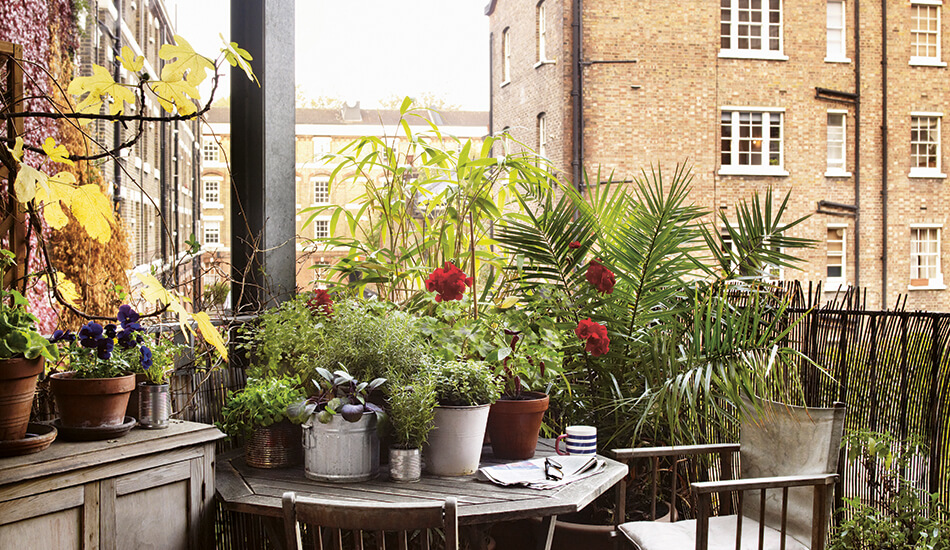
Haven’t got much room? You can still get going . “If you are really limited, to a windowsill, a tiny balcony or a small area just outside a door, you can do is have a generous pot each of, say, your three favourite herbs,” says Bertelsen. “Even a container garden on this scale will enhance your space, and add a new dimension to your cooking.”
Once you’ve settled on a spot, consider the conditions . “A reasonably sunny, moderately sheltered spot will, of course, open up more possibilities for growing a wider range of crops, but inhospitable conditions need not be a deal-breaker,” he explains. “While I am a fervent advocate for growing your own, there is little point if you’re not going to make use of the crops. It is well worth taking some time before you start sowing and planting to think about what you love to eat, and what you really need and want for your kitchen. Think in terms of quality rather than quantity.”
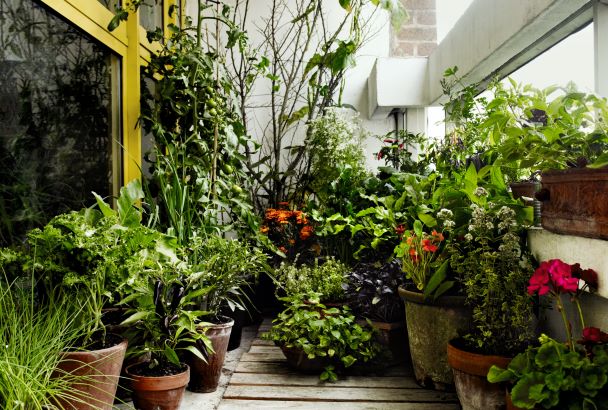
As with everything, aesthetics count “When arranging my pots, my aim is always to avoid things looking flat and static. Think contrast: bright orange flowers next to glaucous leaves; purple and bright green foliage side by side; or broad shiny leaves next to something fine and feathery. Try to vary the height too. Just as in the garden, it is not always the case that the tallest plants should be at the back, although you must be careful not to let a giant specimen block out all the light.”
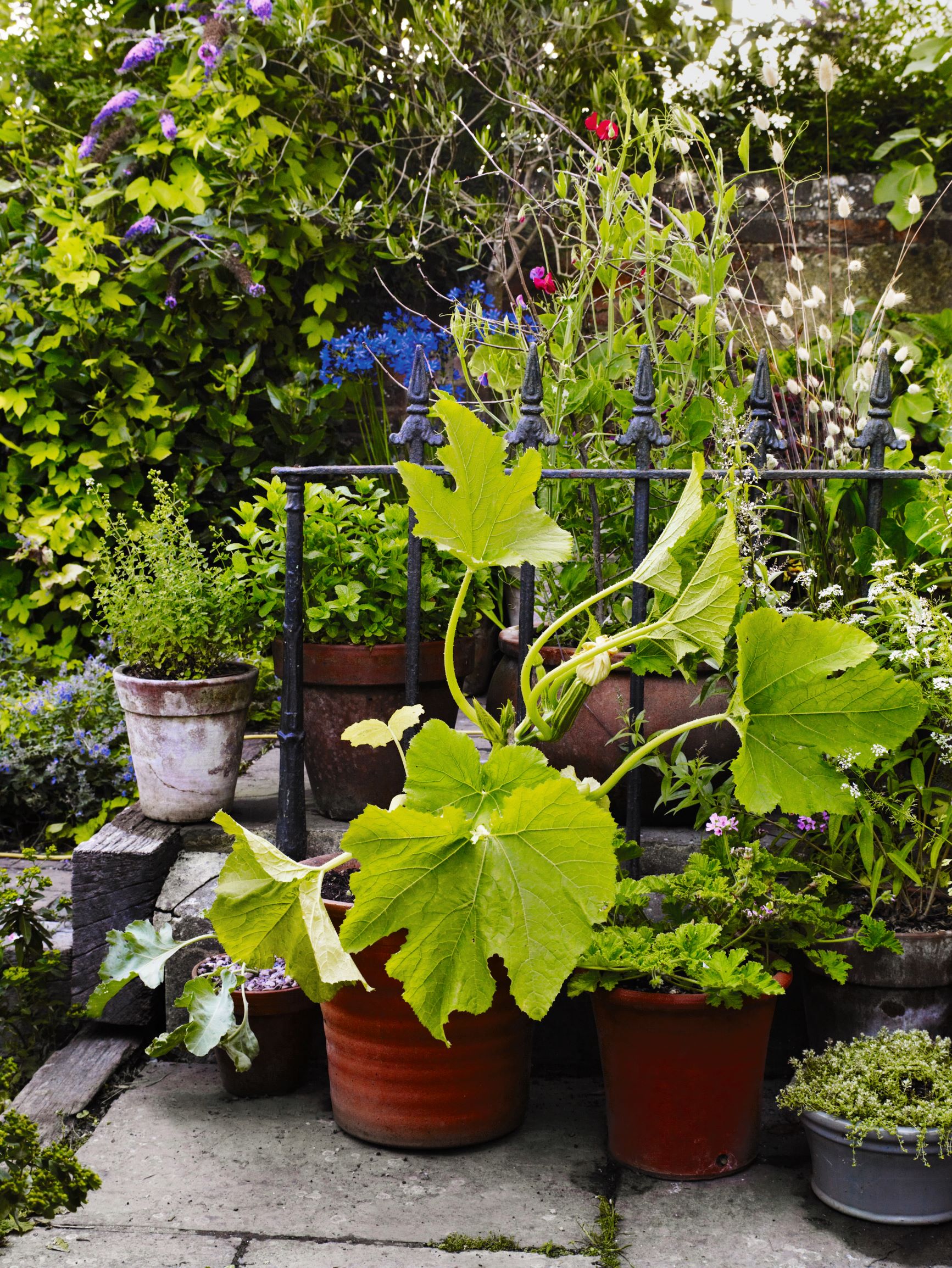
Pick your pots Different materials bring different qualities to a container garden, some better than others. “Rather like supermodels, terracotta pots look good anywhere, but the best can command eye-watering prices,” writes Bertelsen. “While you can get cheap alternatives, the more expensive pots will repay the investment – they are properly frost-proof and will last for years.”
Stone offers similar advantages. “If you’ve ever travelled in Italy, you will probably have seen plants being grown in beautiful stone pots,” he goes on. “I always come home full of plans to try to recreate the effect. Then I remember that while stone may be beautiful, long-lived and excellent for moisture retention, it is also extremely heavy and expensive – much more so than even good quality terracotta. An excellent alternative to stone, concrete is much cheaper and will take on a mellow patina with age.”
And if you can’t find anything you like, you can always try recycling. “Old watering cans, buckets, food containers, sinks and wheelbarrows – you can use more or less anything to grow fruit and vegetables. Apart from being a great way of introducing some colour and character to the container garden, they’re cheap and look good in almost any setting.”
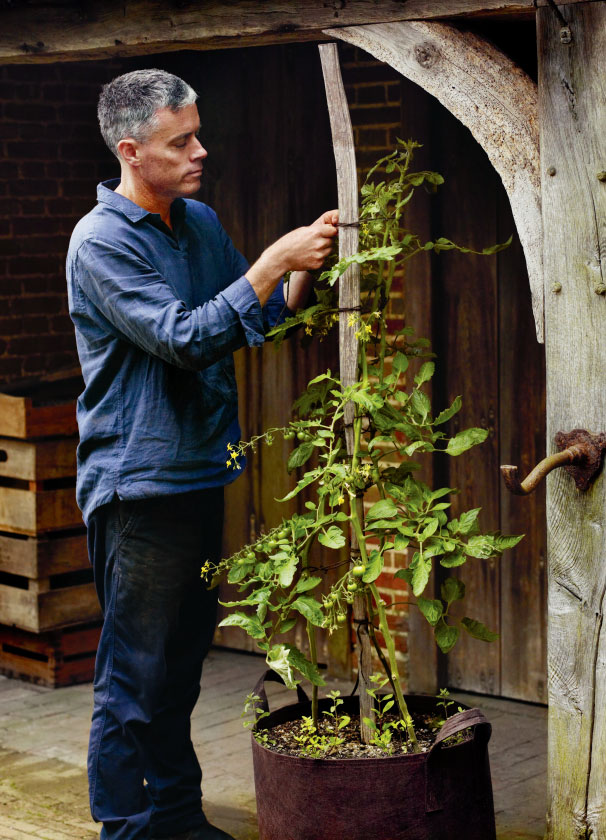
Get your tools (you don’t need much) “Very little equipment is needed for container gardening,” Bertelsen says. “A decent hand fork, a good sharp trowel – I like the Sneeboer brand, made in the Netherlands and sold at (among other places) Great Dixter – and a watering can with a fine rose are pretty much all you will need. Add some decent secateurs (pruning shears) – my favourites come from Japan and are as simple as can be (just two pieces of forged metal and a spring), so there is nothing to go wrong, and they hardly ever seem to need sharpening. A ball of decent twine will be useful too. You may also want to add a pair of gloves to your toolkit. I’ve got into the habit of wearing them all the time. If you are cooking as much as I do then it is a real boon to be able to keep your hands clean, not to mention beautifully soft.”
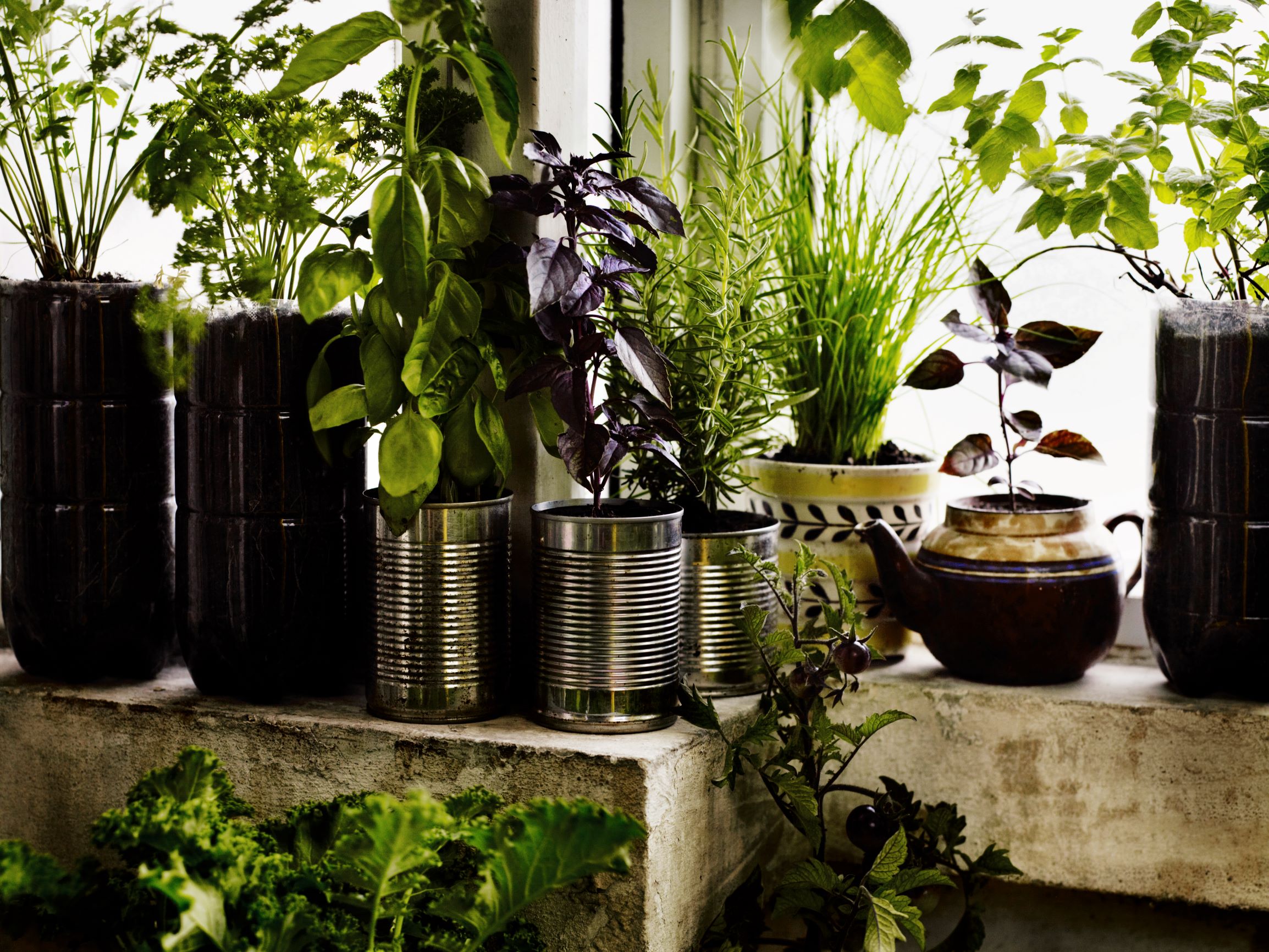
Ready to get sowing? Then get dirty Whatever your choice, when planting seeds I recommend using a compost mix specially prepared for sowing seed,” writes Bertelsen. “Seed compost (seed starting mix) usually comes in small bags, and its fine texture and good moisture retention are designed to encourage germination and healthy growth. For direct sowing – that is, sowing seed where it will grow to maturity – it’s fine to use your regular compost. It’s also pretty much essential to use a soil based compost for perennial plants, such as trees and shrubs, because these long-lived plants need the nutrient- and water-holding properties of soil if they are to thrive. And if you are planning to grow acid-loving plants such as blueberries, you must use an ericaceous compost, or the plants will be unable to access the nutrients in the compost and eventually starve to death.”
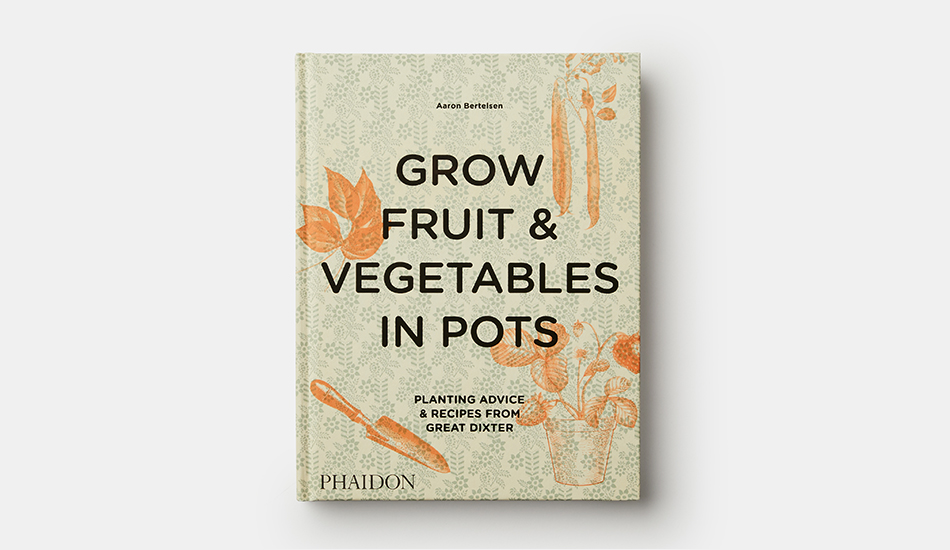
For more vital, useful tips, and plenty of recipes to go with your produce, order a copy of Grow Fruit & Vegetables in Pots here